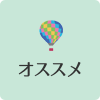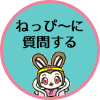本文
Exhibition of works produced by prisoners of war
An exhibition of works produced by prisoners of war was held at the Aonogahara Prisoner of War Camp from December 14 to 19, 1918. In holding the exhibition, Shuichi Miyamoto, the President of the Aonogahara Camp, reported as follows:
The objective of holding an exhibition
The objective of holding an exhibition is to have prisoners produce educational reference items, agricultural handiworks and daily commodities in Germany and Austria and leave them as materials for the future.
The venue and the period for the exhibition
Venue: The southern barracks of the Aonogahara Prisoner of War Camp at Takaoka Village, the Kato District
The period and time of the exhibition: From 9:00 am to 3:00 pm for six days from November 15 to 20, 1918
Explanations about exhibited items
The exhibited items were produced by German and Austrian prisoners at the camp, with a small number of imperfect tools made in the smallest places. All items were produced by many days of hard work. Specific items and their quantity are listed in the accompanying sheet. The outline of the main items is explained on the left.
(“A report of holding an exhibition,” The Ouukedai Diary, 1918)
The period for the exhibition was later changed to six days from December 14 to 19. The exhibition drew throngs of people. Authorities at the prisoner of war camp held the exhibition thinking that works produced using German and Austrian techniques would be of reference to Japan in the future. Meanwhile, the sale of exhibited items was also a significant opportunity for prisoners to earn some cash.
The exhibited works included paintings, carpentry, metal works and machinery, which shows that prisoners interned at the Aonogahara Prisoner of War Camp, the majority of whom had been formed by the crew of battleships, were a group of engineers. In particular, regarding the machinery, “A report of holding an exhibition” states, “The machinery was small in number, but it was the most popular with the people. The oil engine and the button maker in particular attracted many people who wanted to buy them. The outline of the oil engine appeared in newspapers such as the Rojou Shimbun and the Tokyo Hochi Shimbun. The item drew many orders from across the country.” In addition, the hull remover and the fodder cutter were produced in response to a request from the Kato District Agricultural Association. According to the “Guidebook on Exhibitions” (in the possession of the Württemberg State Library, Stuttgart, Germany), Hangstein, who left many photographs of the Aonogahara Prisoner of War Camp, also exhibited a picture book containing photographs of the camp and the surrounding area.
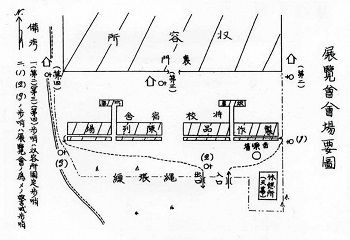
Image: A drawing of the exhibition venue (courtesy of the National Institute for Defense Studies)
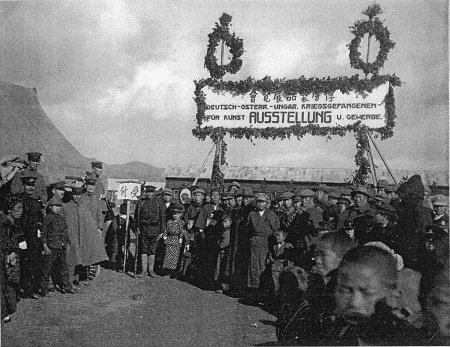
Photo: The exhibition (courtesy of Mr. Dieter Linke)
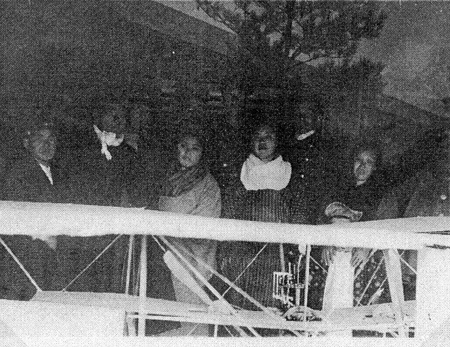
Photo: Visitors and exhibited items (courtesy of Mr. Dieter Linke)
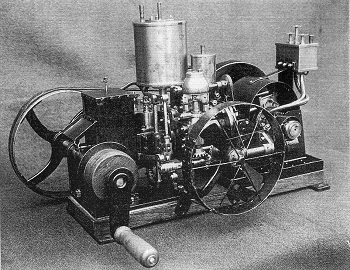
Photo: “Metal Machine” produced by a prisoner (courtesy of Mr. Dieter Linke)
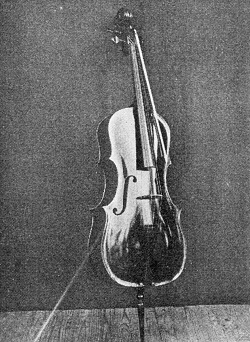
Photo: “Cello” produced by a prisoner (courtesy of Mr. Dieter Linke)
Prisoners at the Aonogahara Prisoner of War Camp and the local community connected through the exhibition of works produced by prisoners, which attracted considerable attention. Works produced by prisoners still remain as examples of that connection.
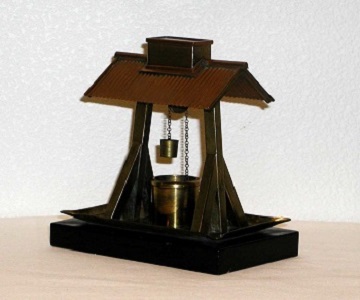
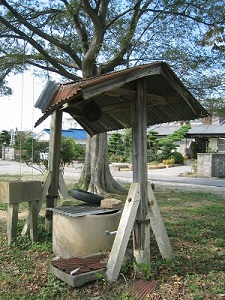
Photo: “Ashtray (well-shaped)” produced by a prisoner (courtesy of an unnamed individual) and a well within the grounds of the camp that was the model for the work
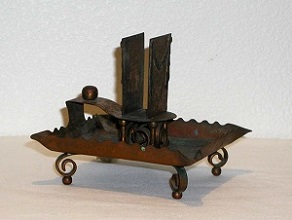
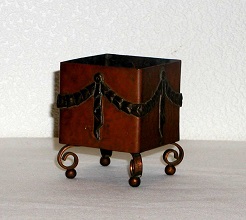
Photo: “Smoking Tool” produced by a prisoner (courtesy of an unnamed individual)
Works that were sold at the exhibition were stored by local residents with much care and attention. These are precious materials that provide a glimpse of the old times. The picture postcard shown below was also displayed at the exhibition.
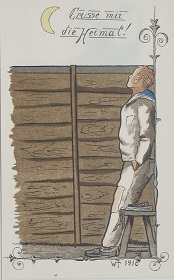
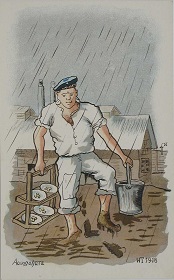
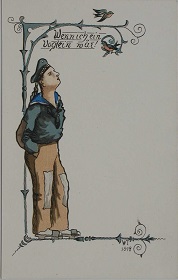
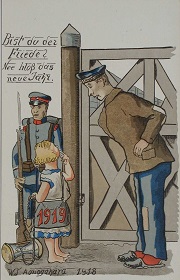
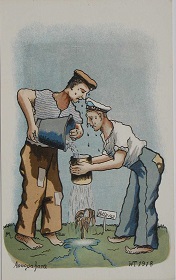
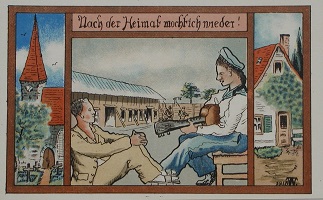
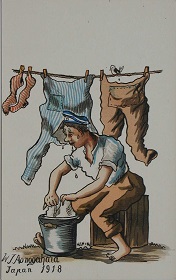
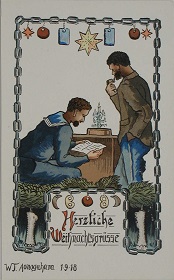
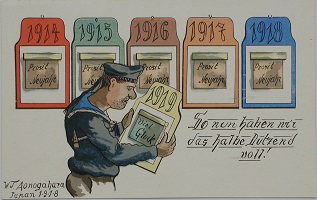
Photo: “Picture Postcard” produced by a prisoner (courtesy of an unnamed individual)
The two embroideries shown below are believed to have been brought into the camp by a prisoner and subsequently handed over to the camp.
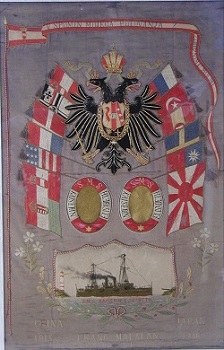
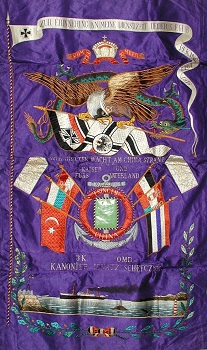
Photo: Embroidery (courtesy of an unnamed individual)
The embroidery on the left shows a crest symbolizing the Austrian Empire (a two-headed eagle, the imperial crown on top of it and the crest of the House of Habsburg-Lothringen with the addition of FJ, the initials of Emperor Franz Joseph, on the body). Under this imperial crest is a picture of the SMS Kaiserin Elisabeth, on which some of the prisoners were crew members. “China in 1913” shows the year when they left the home port to be sent to East Asia, and “Japan in 1916” is considered to show the present when they were interned at the camp. Franz(c) Malalan, whose name is embroidered, was a prisoner of war (second-class seaman) who had been a crew member of the SMS Kaiserin Elisabeth and was from the outskirts of Trieste that was part of the Austro-Hungarian territory at that time.
The embroidery on the right shows a German naval ensign and on top of it are the embroidered words expressing the prisoners’ pride in their military service. In the center of the embroidery is the phrase “We defended the coast of China for the Emperor and our country.” At the bottom of the embroidery is what appears to be a picture of Jiaozhou Bay, China, where the German military were stationed. “Artilleryman Kanonier” and “Ignatz Schefczyk” on the upper part are the names of German prisoners from Oberschlesien interned at the Aonogahara Prisoner of War Camp.
There remain other items noted in connection with prisoners at the Aonogahara Prisoner of War Camp in addition to the ones displayed at the exhibition. One of them is an oil painting depicting a farm, which was painted by a prisoner and sent to a local resident.
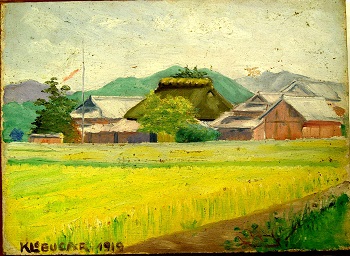
Photo: An oil painting depicting a farm (courtesy of an unnamed individual)
The painting shown above was done by Viktor Klobucar (1878–1965), a lieutenant in the Austro-Hungarian common navy. Klobucar was born into a Croatian family of the military aristocracy. After graduating from military academy, he enrolled in the navy. Klobucar was involved in establishing the naval air corps and became the first aviation unit commander of the Austrian Navy. He himself was a pilot and joined a flight race to travel around Great Britain in 1911.
Klobucar later became a crew member on the SMS Kaiserin Elisabeth and saw the start of World War I at Qingdao. Like other Austro-Hungarian soldiers, he became a prisoner of war after the fall of Qingdao and was interned in Japan. He was sent from the Kurume Prisoner of War Camp to the Aonogahara Prisoner of War Camp in August 1918. Fourteen of his oil paintings were displayed at an exhibition of works produced by prisoners that was held at Aonogahara in December the same year.
The oil painting shown above is the one of the barley harvest season done by Klobucar in 1919. It was sent to a farmer in Takaoka (Kato City) whose farm was used as the model for the painting.
Austria-Hungary collapsed as a result of World War I and a new country named Yugoslavia was established in the South Slavic area. Croatia, where Klobucar was from, was also part of this country. On December 5, 1919, Klobucar guided 71 Yugoslavs from Aonogahara and 9 from Narashino and returned to his country ahead of other German and Austro-Hungarian prisoners.




